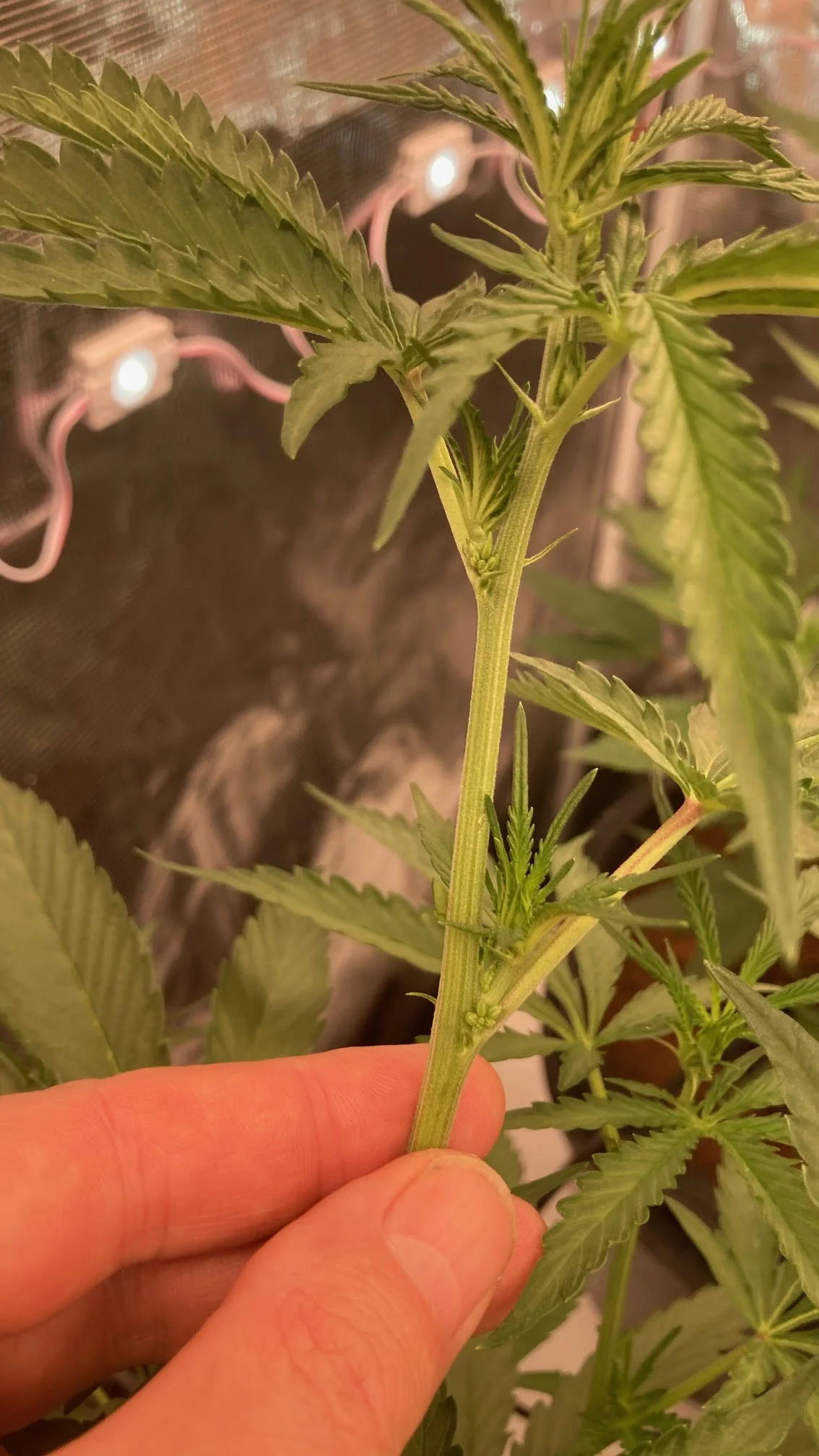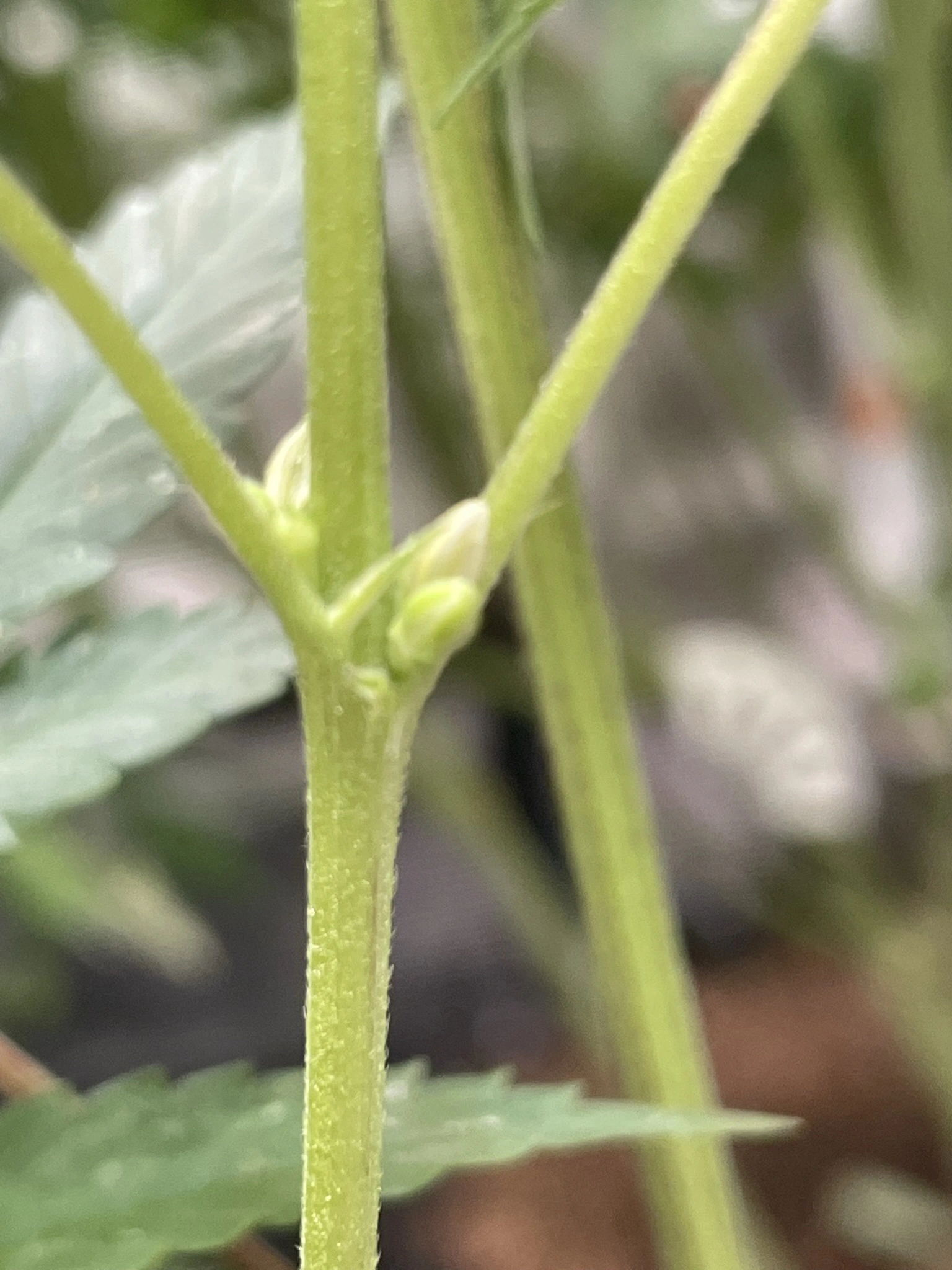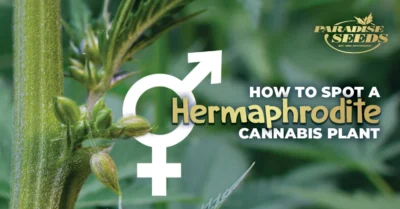How to spot a hermaphrodite cannabis plant (or hermie as they are also frequently known) is a skill that every new weed grower should learn as it will potentially save a lot of heartbreak. In this article you will learn about bananas, balls and feminized plants which may decide to suddenly identify as males.
Contents
Hermaphroditism is a feature of the natural world and can be found in many plant species (including cannabis and other flowering plants), invertebrates (such as worms and slugs) a few insects and some species of fish. In these cases, organisms can develop both sets of reproductive organs, which is pretty cool, but not in a grow room filled with weed plants.
The emergence of a hermaphrodite cannabis plant in the grow room is a sign to panic as it will release pollen into the grow room and fertilize the other females. If this happens, they will focus their energy on producing seeds instead of flowers and the result will be a damaged crop for the weed grower.
Is it easy to see a cannabis hermaphrodite plant?
While there are differences in exact terminology, for the purpose of this article we are classing a cannabis hermaphrodite which is supposed to be female but suddenly starts sprouting balls or bananas (we are not using crude language here, that’s what they are called and that’s what they look like!)
Female plants will show pistils at the base of the bud site (looking like a thick hair strand), while males show pollen sacks (which look like balls). In early flowering, these pollen sacks may be seen together with the pistils (or, in the case of true hermaphrodites) on different branches.

In late flowering stages, the buds may produce bananas, or nanners, which get their name from their appearance (and the fact they can grow in bunches). They are actually the male stamen, which is normally concealed in the pollen sack ‘balls’, breaking through the bud/flower. Often a light green or yellow color these will also produce pollen.
The good news is that the main causes of hermaphrodite cannabis plants can be avoided through good management. We will take a look at these factors in more detail, but at a glance the main reasons that cannabis plants turn hermaphrodite are a result of:
- Bad genetics
- Light stress
- Temperature stress
- Nutrient stress
- Ph stress
Cannabis Hermaphrodite plants resulting from genetics and breeding
Bad cannabis genetics can cause a hermaphrodite cannabis plant. While some varieties have more of a tendency for hermaphroditism, the most common cause of a hermaphrodite cannabis plant is feminized cannabis seeds which have not been properly stabilized through the breeding process. This is a good reason not to trust cheap seeds and always buy feminized seeds from a reputable seed company.
Before feminized seeds growers used regular seeds which could produce male and female plants. Feminized cannabis seeds have removed much of the uncertainty about the sexing of weed plants and this innovation in breeding was a game changer.
Light stress can cause hermie weed plants
Stress is the main reason why female weed plants develop into hermaphrodite cannabis plants in the flowering stage and one of the main culprits is light. Of course light is one of the vital ingredients for plant life and for this reason it is advised to pay attention to the basics.

This means ensuring there are no light leaks in the grow room and to give flowering photoperiod plants a regimented regime of at least 12 hours of non-stop darkness. Another stressful factor is having the lights to close to the flowering weed plants, and if plants are showing signs of light burn (a ‘bleached’ leaf appearance is a sign of this) the height of the lights needs to be adjusted. Messing around with the lighting schedule is one of the surest ways to provoke the plant to hermie.
For outdoor growers, light control is more tricky and grower’s need to be aware of local environmental conditions, such as overhanging streetlights or a sensitive security light.
Other factors which can cause a hermaphrodite cannabis plant
A consistent environment provides the ideal growing conditions for cannabis plants and for this reason temperature fluctuations are also a common factor which induces hermaphroditism in weed plants.
This can be a problem for indoor growers at the height of summer or winter and an attic grow setup is particularly vulnerable in this respect. In summer, high external temperatures will cause heat stress issues (for tips on how to deal with these, consult this article), while in winter plants in darkness may be affected by extreme cold. The ideal growing temperature to aim for is between 18 – 30°C.

Nutrient and pH factors in creating a weed hermaphrodite
Aside from imbalances in light and temperature, other factors can cause a hermaphrodite cannabis plant, including nutrient related issues (such as nutrient deficiency or nutrient burn) and an unsuitable pH, which will make the grow medium too acidic or alkaline.
Conclusion: What do I do if I find a cannabis hermie?
It is always a good idea to use the lollipop pruning method to get rid of scruffy lower branches in the final weeks of the veg stage for reasons of good plant management (it is a wasted focus for the plant’s growth).
The lollipop pruning method is particularly advised if you are growing a Californian strain. If you see pollen sacks developing on bottom branches it is not fatal. Try removing them by using the lollipop pruning method, which will stop the problem in most cases.
However, if they keep coming then remove the hermaphrodite cannabis plant so it doesn’t fertilize nearby female plants. To avoid the issue with exotic Californian strains, then choose a classic variety alternative for your grow room instead.
The most important advice to give is to keep checking your plant for signs of hermaphroditism in the last 3 weeks of vegging and first 3 weeks of flowering.


